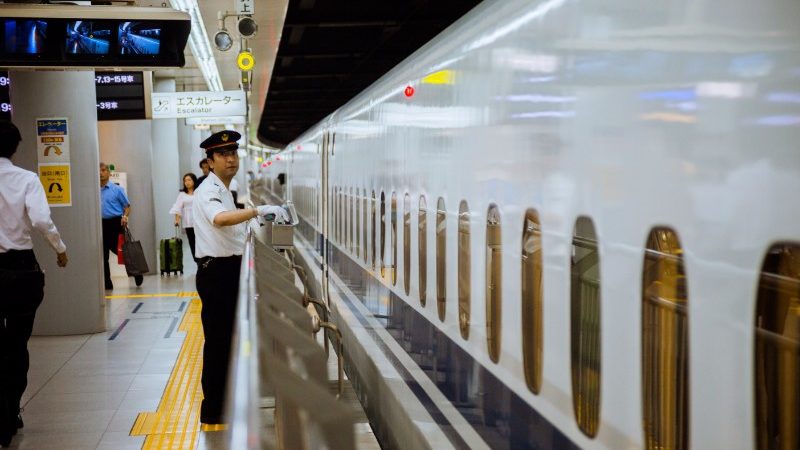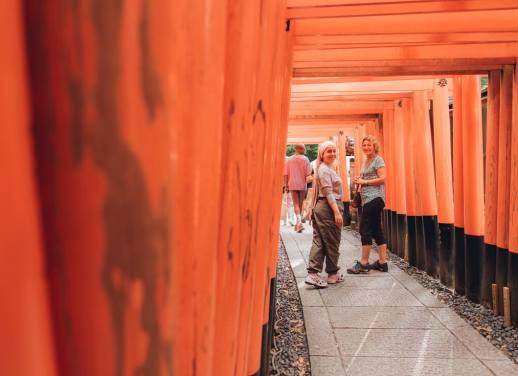Arriving in Japan for the first time means a lot of culture shock, a scramble to get your Wi-Fi sorted and quick trip to the airport 7-11 for the first of many onigiri.
But should your next stop be the JR office? Here’s what you need to know before you invest in a JR Rail Pass.
What is a Rail Pass?
Similar to the Eurail pass, the JR Rail Pass gives you close to unlimited travel for a set period on Japan’s JR trains; you choose a pass for 7, 14 or 21 days. They’re only available to people visiting Japan (residents can’t buy them), and there are two types of pass to choose from: Ordinary or Green. Save your pennies and plumb for Ordinary; chances are the trains are already a lot fancier and cleaner than you’re used to.
Where can you buy one?
Generally, you can only buy your pass outside Japan, and there are a lot of agencies online who will sell one to you. There’s a limited trial going on at the moment where you can purchase your pass once you arrive, but this is more expensive than pre-purchasing. When you buy a pass, the agent will send you a voucher – it’s very, very important you remember to pack this!
The staff will exchange your voucher for a pass at a JR Ticket Office or Travel Service Centre and staple it inside your passport. They’ll also be able to book you tickets on your first train, which, chances are, will be the Narita N’EX, to take you from the airport into Tokyo.
If you have the option, it’s best to choose a Travel Service Centre. They’re specially equipped to deal with foreign visitors, with English-speaking staff and (often) adorable hand-coloured maps.
READ MORE: WHY TRAIN TRAVEL IN JAPAN SHOULD NOT BE MISSED
If a rail pass isn’t already included as part of your Intrepid Japan tour package (check the trip notes before splashing out on a JR Pass), there are some simple ways to figure out if a JR Rail Pass will work for you.
How much travel are you doing?
As a rule of thumb, once you travel return between two cities, like Tokyo to Kyoto and back, a 7-day JR Pass has probably paid for itself. A simple way to work this out is to cost your journey using HyperDia or Google Maps.
Where are you going?
Here’s the thing – JR isn’t the only game in town. Depending on where you’re going, there will be trains, ferries and buses that aren’t operated by JR. Sometimes the JR option will be available but will mean a slower journey (it’s not all Shinkansen, Japan’s network of high speed bullet trains). Again, use HyperDia or Google Maps to budget.
If you’re planning to just explore Tokyo, you’re better off without a pass because Tokyo metro isn’t covered. Instead, make like a local, grab a Pasmo or Suica card, top up and go!
READ MORE: CONVENIENCE STORE FOOD – JAPAN’S WORLD-BEATING CULINARY EXPERIENCE
How long are you prepared to wait?
It’s hard to spend long in Japan without finding yourself in a queue or two, but if you’re hoping to make a quick getaway from the airport or you’re hustling to make a connection, it’s important to know that there can be a long wait to pick up your pass.
If you choose to go without a pass, you can go to ticket counters, or use ticket kiosks. Once you’re in English mode, these are a really quick and easy way of buying a train ticket.
How quickly do you need to arrive?
Your JR pass won’t give you access to every Shinkansen, so if you’re desperate to try the super-fast ‘Nozomi’ and ‘Mizuho’ (which can both travel at speeds of up to 300 kilometres per hour), you’ll need to forgo the pass and buy tickets. These speed demons will get you to your destination around a half hour faster than a ‘regular’ Shinkansen, so weigh up the extra cost before you commit.
If you’re planning to make more than two trips on the famous Shinkansen, chances are a JR Pass will save you money. Just make sure you get familiar with the quirks of the pass, and remember you’ll need to keep your passport with you to use it.
Ready to ride the rails around Japan? Jump on a small group adventure with Intrepid.
Feature image by Victoriano Izquierdo on Unsplash.






